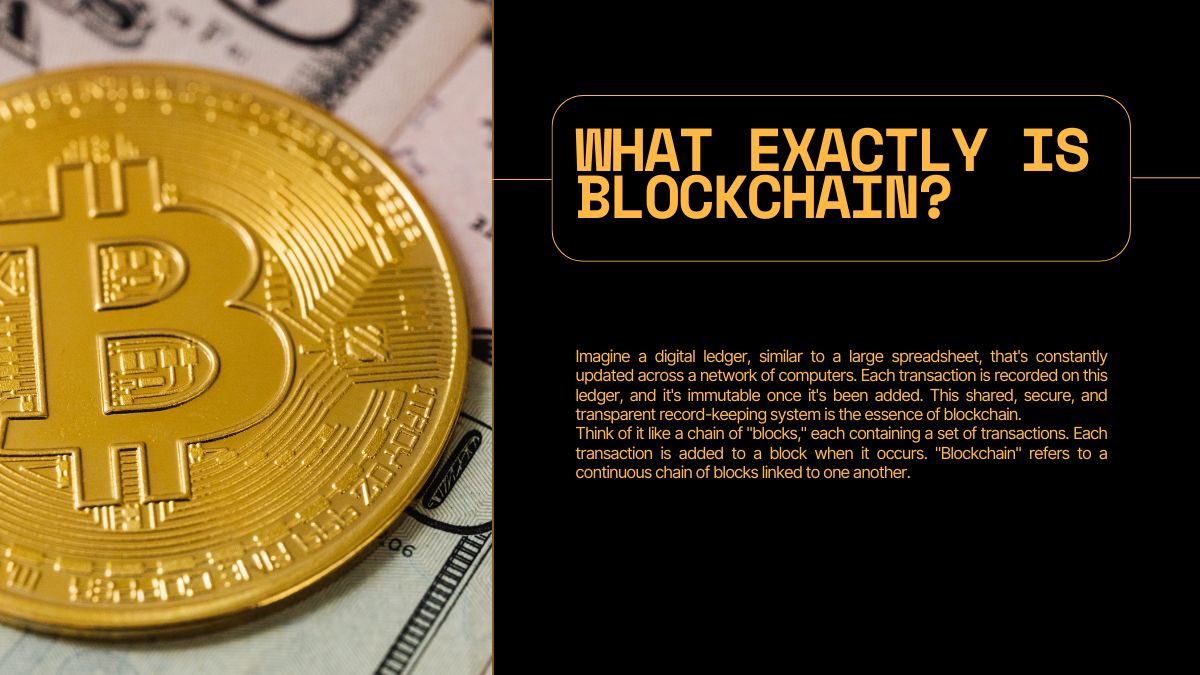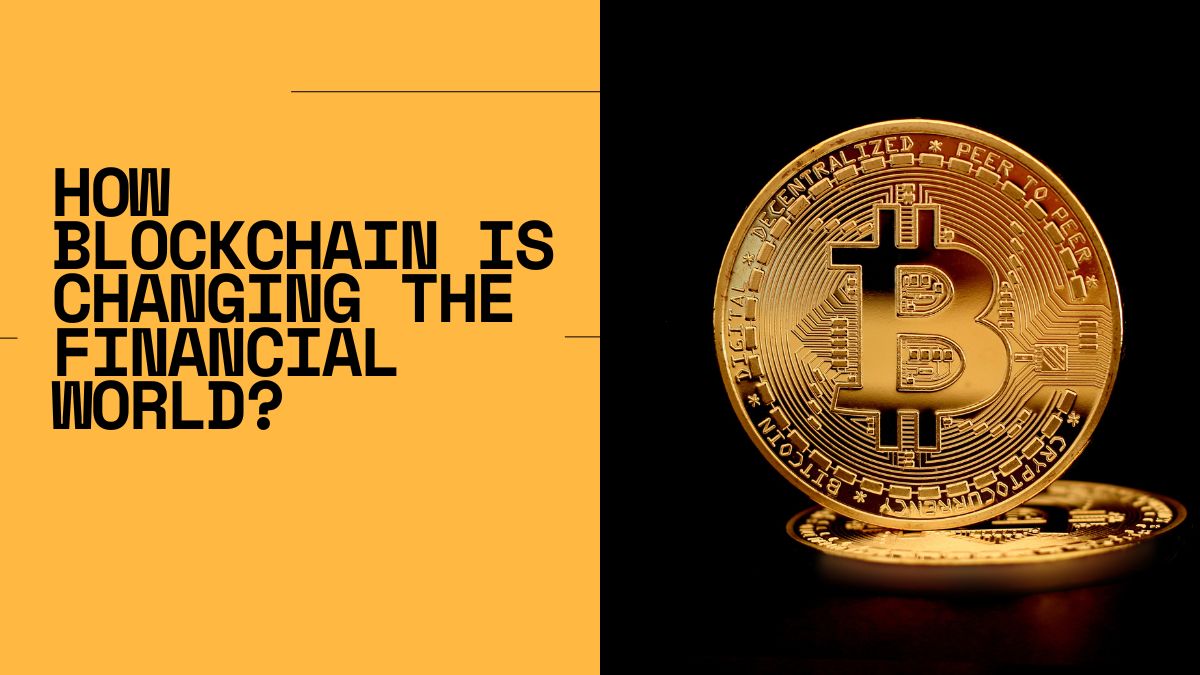When it comes to blockchain buzz, Bitcoin is usually the starting point and the ending point. But the technology underpinning cryptocurrencies is far more transformative than just digital money. Blockchain is reshaping the very foundations of the financial world, promising greater transparency, security, and efficiency. Rather than get lost in complex jargon, let’s explain how this revolutionary technology is changing our lives.
What Exactly is Blockchain?

Think of a large spreadsheet that’s constantly updated by a network of computers. Each transaction is recorded on this ledger, and it’s immutable once it’s been added. This shared, secure, and transparent record-keeping system is the essence of blockchain.
Imagine it like a chain of transactions. Each block contains a set of transactions. Each transaction is added to a block when it occurs. A “blockchain” is a series of linked blocks.
The following are the key features that make blockchain revolutionary:
- Decentralization: No single entity controls the blockchain. It’s distributed among many participants, reducing the risk of single points of failure and censorship.
- Transparency: All transactions are visible to everyone on the network (though personal details can be anonymized).
- Security: The use of cryptographic techniques ensures the security and tamper-proof nature of transactions.
- Immutability: It is impossible to alter or delete a transaction once it has been recorded.
How Blockchain is Disrupting Traditional Finance
Now, let’s explore the specific ways blockchain is changing the financial landscape:
Faster and Cheaper Cross-Border Payments:
- There are many intermediaries involved in traditional international money transfers, making them slow and expensive.
- Blockchain-based solutions, like Ripple, enable near-instantaneous and low-cost cross-border payments.
- This is particularly beneficial for remittances, where individuals send money to family members in other countries.
- Imagine sending money overseas within seconds for minimal fees, eliminating the need for lengthy processing times and hefty bank charges.
Increased Financial Inclusion:
- There are millions of people worldwide who do not have access to basic financial services.
- Blockchain can provide access to financial tools through mobile devices, even in areas with limited infrastructure.
- For the unbanked, cryptocurrency and blockchain-based platforms can facilitate lending, borrowing, and saving.
- Financial services become more accessible to previously excluded people, empowering them to take control of their finances.
Enhanced Security and Fraud Prevention:
- Due to blockchain’s immutability, fraud and hacking are highly unlikely.
- The transactions are permanently recorded and verifiable, so manipulation is less likely.
- This is crucial for protecting sensitive financial data and preventing identity theft.
- For example, supply chain finance can be made secure by tracking the movement of goods on a blockchain, reducing fraud.
Smart Contracts: Automating Agreements:
- An intelligent contract is an agreement between a buyer and seller in which the terms are written directly into code.
- The execution of these functions is automatically initiated when specified conditions are met, thereby eliminating the need for intermediaries.
- This can streamline processes like insurance claims, loan agreements, and real estate transactions.
- Imagine an insurance payout automatically triggered when a flight delay is recorded on a blockchain.
Tokenization of Assets:
- In tokenization, real-world assets, such as real estate, art, and commodities, are converted into digital tokens.
- This allows for fractional ownership, making these assets more accessible to a wider range of investors.
- It also increases liquidity and transparency in asset trading.
- For example, a high value art piece can be tokenized, allowing many people to own a small portion of it.
- Real estate can be tokenized, lowering the barrier of entry for investment.
Decentralized Finance (DeFi): A New Financial Ecosystem:
- DeFi is a movement that aims to build a decentralized financial system on blockchain.
- It offers services like lending, borrowing, trading, and insurance without traditional intermediaries.
- All DeFi platforms are open and accessible to everyone.
- DeFi allows for peer to peer lending, and borrowing, and also allows for earning interest on digital assets.
Supply Chain Finance Improvement:
- Blockchain allows for the tracking of goods and payments along the supply chain.
- This reduces fraud, increases transparency, and improves efficiency.
- It allows for faster payments to suppliers, and allows for better tracking of the origin of goods.
Also Read:
- 10 Best Blockchain Startups in India: Innovation and Growth
- 5 Things to Know Before Investing in Cryptocurrency (2025)
Challenges and the Future
There are many challenges associated with blockchain, despite its immense potential:
- There are some blockchains that have difficulty handling a large volume of transactions due to their scalability.
- Blockchain is still in the process of undergoing regulatory reform.
- Security Risks: While blockchain is inherently secure, vulnerabilities in smart contracts or exchanges can lead to losses.
- Energy Consumption: Some blockchain networks, like Bitcoin, consume significant amounts of energy.
Blockchain’s future in finance appears bright despite these challenges. As the technology matures and regulations become clearer, we can expect to see even more innovative applications emerge.
Conclusion
A blockchain is more than just a buzzword; it’s fundamentally changing the way we interact with money. There is no doubt that it has the potential to transform the financial world, from faster payments to greater inclusion in the financial system.
While challenges remain, the ongoing innovation and adoption of blockchain technology are paving the way for a more transparent, secure, and accessible financial future. Look here for the future of finance – it’s being built right now.

